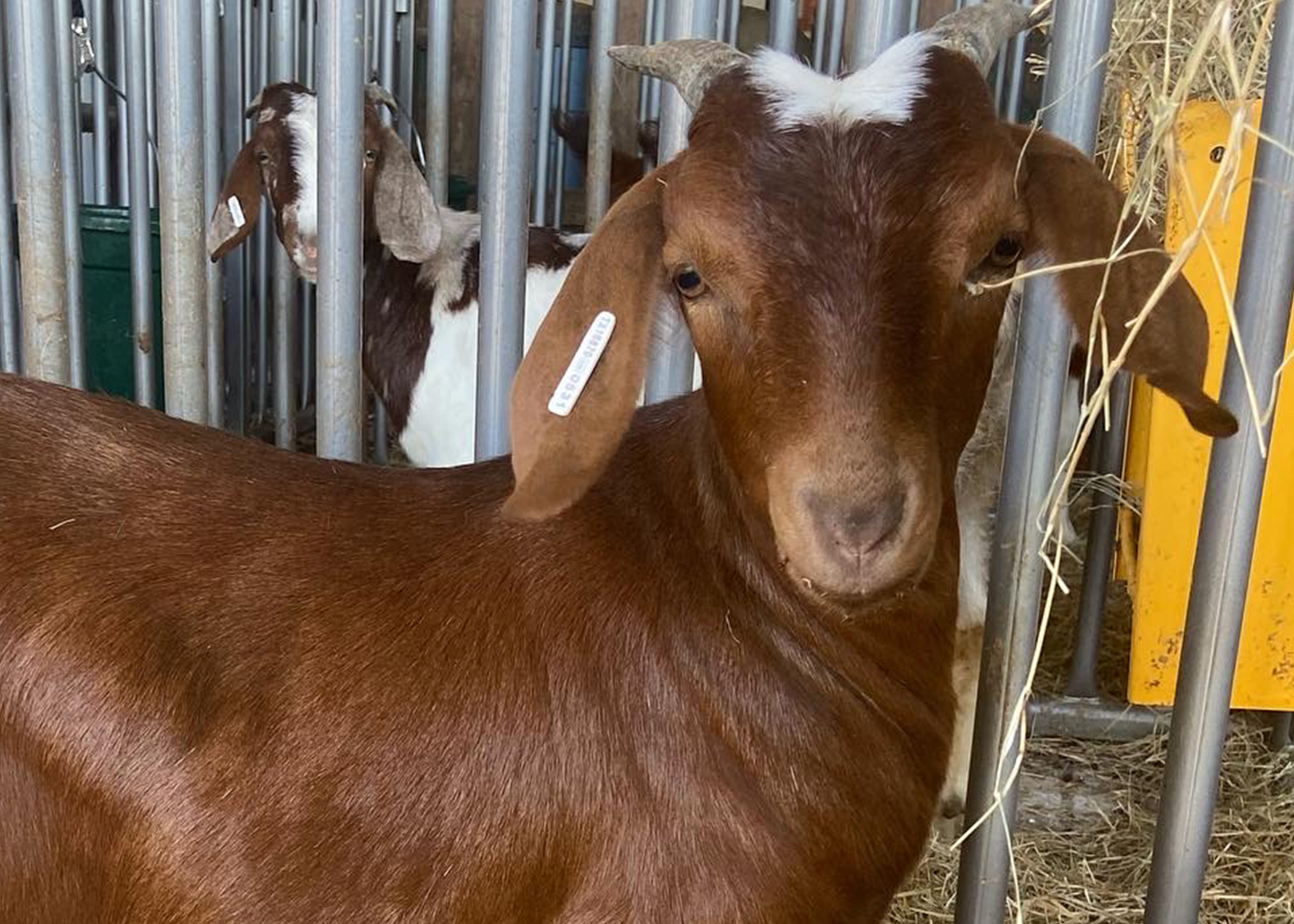What to know before bringing home goats
Published 2:28 pm Monday, April 3, 2023

- CUTLINE: Once niche livestock in Mississippi, goats are growing in popularity among 4-H members, small-farm owners and others who want goat milk or meat. Those who want to join the ranks of goat owners should understand some important aspects of goat ownership before bringing them home. (File photo by MSU Extension Service/Leyla Rios) Alt Text: A goat.
MSU Extension Service
“Although there has been a drop in the official population numbers, we know interest is growing in Mississippi among all types of goats,” said Leyla Rios, Extension small ruminant specialist with the Mississippi State University Extension Service.
According to official statistics from the U.S. Department of Agriculture, meat and other types of goats were estimated at 19,000 head in 2022, down from 21,000 the previous year. Data for dairy goats in Mississippi are not available, but total numbers for the U.S. were down slightly.
Goats make ideal 4-H livestock project animals for young children because of their small size and docile nature. Dairy goats have become the most prevalent among Mississippi 4-H showmanship participants.
“In the last 10 years, the number of dairy goats shown in the Dixie National Junior Roundup has more than doubled,” said Extension 4-H livestock specialist Dean Jousan about the annual showcase for 4-H and FFA livestock programs.
Farmers who have limited acreage or want to diversify their livestock operations often choose goats. Others want goats for their meat or milk.
Regardless of the purpose, people who want to join the ranks of goat owners should understand some important aspects of goat ownership before bringing one home.
What breed is best?
Rios said people should first identify their production goals.
“What do you want: meat, fiber, milk or other value-added products? Or do you want to raise purebred, registered animals to sell to other farmers or people who show goats?” she said. “You need to choose the best breed that can meet your long-term production objectives.”
Dairy goat breeds include Alpine, Saanen, Nigerian Dwarf, Nubian, La Mancha, Toggenburg or any cross of these breeds. Meat goat breeds include Boer, Kiko or Spanish.
Breeds with short hair and tropical breeds, such as Nubian, do better in Mississippi’s hot, humid weather.
How many goats are ideal?
Beginners should start with a few animals and adjust the number per acre over time. Under optimal conditions, an acre can support up to six goats, but owners should have a good grasp of management practices and nutritional requirements before adding more animals, Rios said.
How much space and what type of shelter is needed?
Goats need about 9 square feet of open area per animal in a barn and 22 feet per animal in a pasture. A shelter is a necessity and depends on an owner’s budget and goals.
“The most important aspect is that it provides protection from the sun and from drafts during cold weather,” said Rios, who is also a researcher with the Mississippi Agricultural and Forestry Experiment Station. “A simple three-sided structure with a roof is sufficient for a start, but once the herd grows, you need a more sophisticated barn-type building with internal subdivisions for different groups of animals.”
What kind of predator protection do goats need?
Goats are vulnerable to predators and need a secure, fenced area. Owners may want to consider using guardian dogs as added protection.
“In the South, coyotes are the most common predators of goats. They can attack and kill adults and kids,” Rios said. “The most popular protection used is guardian dogs. There are several dog breeds that are used as guardians, including Great Pyrenees, Anatolian, and Kangal. They will always stay with the animals, following them as they graze and sleeping in the paddocks.”
How much food and water do goats need?
A goat gets 70% to 80% of its main diet from grasses, forages and diverse vegetation. The remaining 20% to 30% can be any supplement such as corn, grain or mixes of cereals, which provide a source of additional energy and protein to balance their diets. They can be commercial mixes or diets mixed on the farm.
Goats should always have a mineral supplement source, which is required for correct metabolic functions and for increased immunity.
The amount of water they need depends on how much water they are getting from fresh grass. In general, goats need 0.3 to 0.5 gallons of clean water per day and up to 3 gallons per day when lactating. Dairy goats especially need enough clean water, which helps increase milk production.
What are the challenges?
Goats do present some challenges for beginners, including their susceptibility to internal parasites. Prospective owners should ensure they understand proper management practices, including parasite control, rotational grazing management practices, and clean housing requirements. When done correctly, these management practices can help goats thrive.
Bringing goats home
Once people decide to get goats, Rios offered some final tips:
• Find a reputable breeder and visit the farm where the animal was raised. Buying directly from a breeder allows a buyer to visit the animal’s environment and understand the breeder’s management practices.
• Set up an appointment with a veterinarian and determine if he or she can provide care for the herd. Having an established relationship with a veterinarian can help during emergencies and reduce the loss of animals. While many veterinarians have experience with small ruminants, any veterinarian who is willing to learn about them will be helpful.
• Quarantine any new animals for at least 40 days before introducing them to other animals on the farm. Work with a veterinarian to get a complete health assessment and vaccines before allowing them around any other animals.
• Raising goats is a long-term commitment. They can live for 10 years or more with proper nutrition and living conditions.



